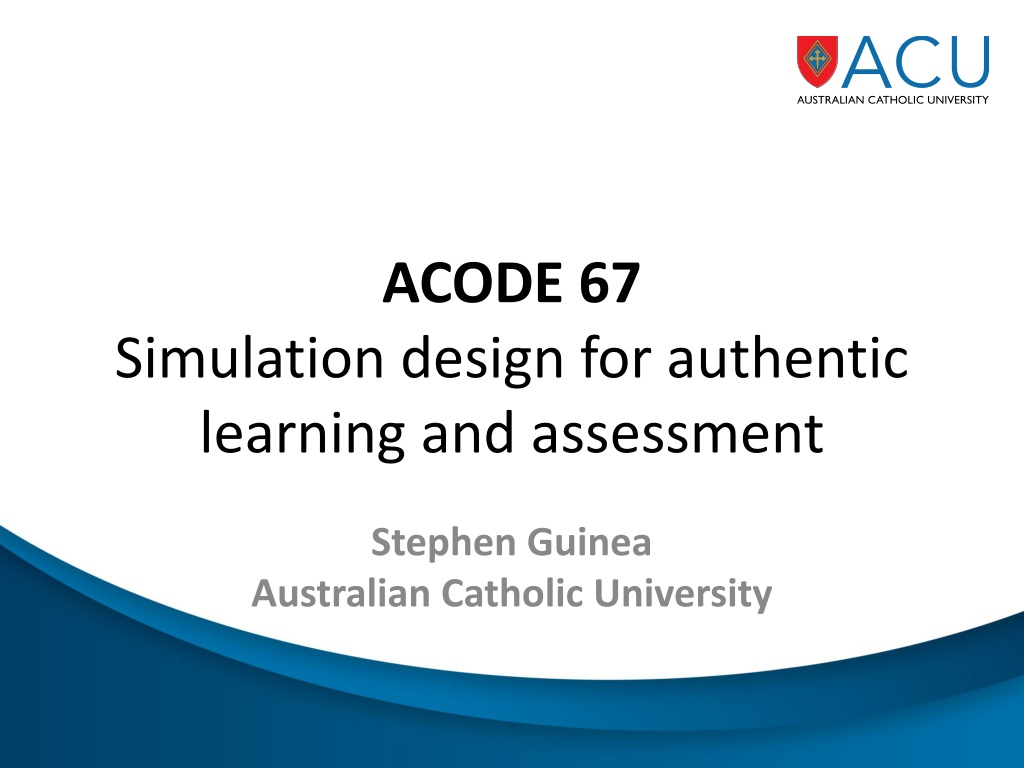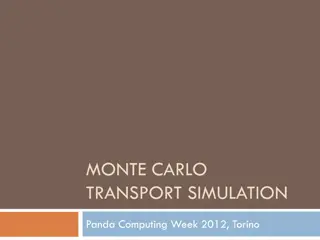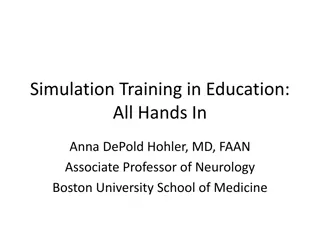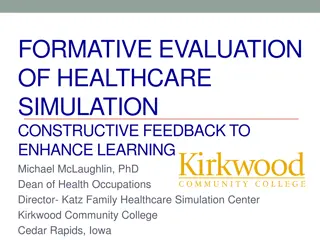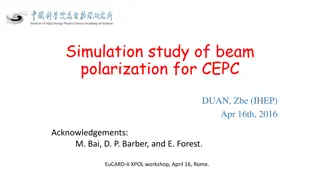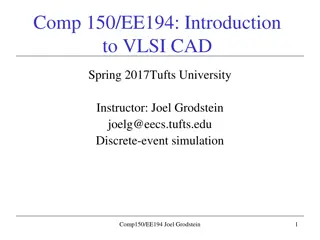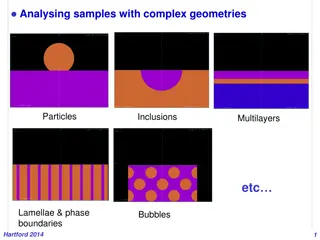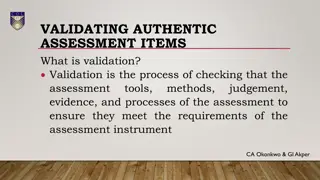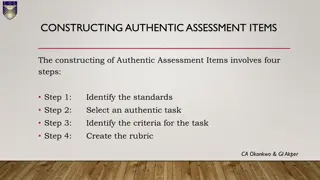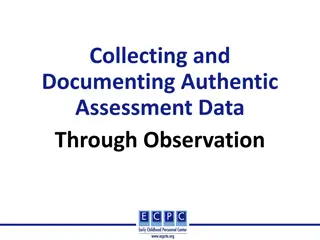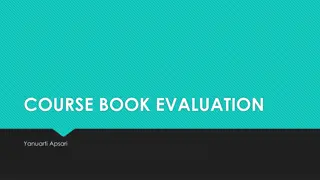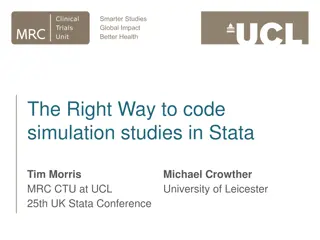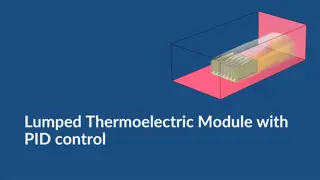Simulation Design for Authentic Learning and Assessment at ACU
Simulation design for authentic learning and assessment is a crucial aspect of education, particularly in the healthcare field. At the Australian Catholic University (ACU), simulation plays a significant role in providing students with authentic experiences that bridge the gap between theory and practice. By incorporating elements of authentic learning and assessment, ACU ensures that students are well-prepared for real-world scenarios. Collaboration between education and industry, innovative approaches to clinical experience, and a focus on simulation pedagogy are key drivers in this process. The integration of authentic contexts, tasks, expert performances, and opportunities for reflection and knowledge construction contribute to creating a rich learning environment for students.
Download Presentation

Please find below an Image/Link to download the presentation.
The content on the website is provided AS IS for your information and personal use only. It may not be sold, licensed, or shared on other websites without obtaining consent from the author. Download presentation by click this link. If you encounter any issues during the download, it is possible that the publisher has removed the file from their server.
E N D
Presentation Transcript
ACODE 67 Simulation design for authentic learning and assessment Stephen Guinea Australian Catholic University
Introduction Simulation at ACU Simulation and authentic learning Simulation, authentic learning and authentic assessment
Simulation at ACU Faculty of Health Sciences 6 Schools 13 health disciplines
Simulation and Authentic Learning Drivers for authentic simulation activities: Requirement for non-traditional clinical placements Requirements set by credentialing bodies Collaboration between education and industry
Simulation and Authentic Learning Drivers for authentic simulation activities: Growing acceptance for innovative approaches to clinical experience Better understanding of simulation pedagogy Design of authentic learning experiences Herrington and Oliver (2000) Lave and Wenger (1991)
Simulation and Authentic Learning Elements of Authentic Learning Elements of Fidelity
Simulation and Authentic Learning Characteristics of Authentic Learning Environments: Authentic context Authentic tasks (processes) Expert performances Multiple roles and perspectives (negotiated meaning) Collaborative construction of knowledge Opportunities for reflection (evaluation) Opportunities for articulation of tacit knowledge (shared repertoire) Coaching and scaffolding Authentic assessment (Herrington & Oliver, 2000)
Simulation and Authentic Learning Case One: Paramedicine
Authentic Learning Outcomes 1.New understandings of interpersonal relating 2.New understandings in maturity, respect and tolerance 3.New understandings of self-awareness within a team 4.Belonging and professional identity Ford, R., Webb, H., and Allen-Craig, S. (2014). A simulated wilderness exercise: the development of relational competence in paramedic students. Journal of Paramedic Practice, 6(11), pp:574-581
Simulation, authentic learning and authentic assessment Case Two: Occupational Therapy
Monday Students oriented to workplace, clinical supervisor, work process and receive referral Wednesday: conduct workplace visit with clinical supervisors / academic staff Tuesday Interview simulated clients and health professionals Friday Casepresentation to clinical supervisors and peers Thursday Assessment reports and intervention plans
Simulation, authentic learning and authentic assessment SPF-R short version Communication Professional behaviour Self-management Client reports and documentation Return to work plans
Where to next Case Three: Nursing
Where to next E-Health record for learning: Context authenticity Process authenticity
Where to next E-Health record for assessment: Mechanisms for: Peer evaluation Academic evaluation Linkages to portfolios
Conclusion Health simulation needs to learn from others Designing according to fidelity does not facilitate authentic assessment Adopting principles of authentic learning environments aids alignment of assessment
References Ford, R., Webb, H., and Allen-Craig, S. (2014). A simulated wilderness exercise: the development of relational competence in paramedic students. Journal of Paramedic Practice, 6(11), pp:574-581 Herrington, J., & Oliver, R. (2000). An instructional design framework for authentic learning environments. Educational Technology, Research and Development, 48(3), 23-48 Lave, J., & Wenger, E. (1991). Situated learning: Legitimate peripheral participation. New York, NY: Cambridge University Press Rodger, S., Bennett, S., Fitzgerald, C., & Neads, P. (2010). Use of simulated learning activities in occupational therapy curriculum. Final report.: Health Workforce Australia
